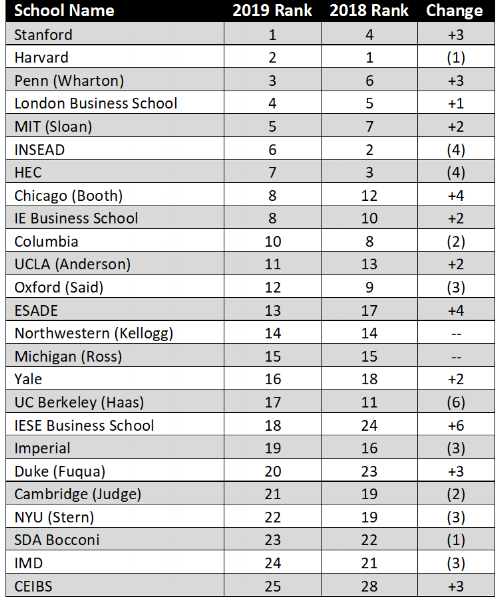The cost of obtaining an MBA from a global top 20 program has increased 6.3 percent in 2022, according to the recently published Business Because Cost of MBA Report 2022. The estimated average cost now totals $189,000, including tuition, fees, living costs, healthcare, and materials. This continues the steady upward trend of the last few years; costs averaged $176,000 last year and $168,000 in 2020.
The report’s 2022 analysis includes only the FT top 20 schools, while last year the analysis included the FT top 20 plus six other top-ranked U.S.-based schools (who had opted out of the 2021 rankings due to the covid-19 pandemic).
Some of the key findings include:
NYU Stern is the most expensive MBA program within the top 20 with a total cost of $246,506. It is followed by MIT Sloan ($239,990) and Wharton ($237,160). On the other end of the scale, CEIBS comes in as the least expensive in the top 20 at $84,500, followed closely by SDA Bocconi ($85,525). These are the only two schools on the list with totals falling under $100K.
Within the top 20, tuition for the U.S. programs average $225,605, significantly higher than the averages for Europe ($121,583) and Asia ($104,881).
Differences in cost between the U.S., Europe, and Asia are magnified by both the strong dollar (making it more cost effective for Americans to study abroad and increasing the expense for international students to study domestically), and differences in average program lengths. MBA programs in the U.S. typically last two years. Those in Europe and Asia run for 12 to 18 months.
Between 2021 and 2022, expenses increased the most at Cornell Johnson (+11.4 percent) and Berkeley Haas (+8.6 percent). The most significant decreases, which are enhanced by fluctuations in the currency markets, were reported by the London Business School (-21.1), CEIBS (-15.1), and HEC Paris (-10.5).
Tuition expenses, which make up the greatest proportion of costs, are the highest at Wharton ($165,748), NYU Stern ($164,652), Columbia ($160,944), and MIT Sloan ($160,800). They are the lowest at CEIBS ($68,300) and SDA Bocconi ($64,800).
Living costs vary considerably based on the school’s location. Within the U.S. schools, the estimated cost of living was highest for Stanford ($72,396), followed by NYU Stern ($67,792), and Harvard ($62,780). Cost of living was the lowest at Duke ($40,608).
Healthcare costs are considerably higher in the U.S. than in Europe or Asia. Domestically, the Yale School of Management offers the least expensive healthcare coverage at $5,512. It is important to note that some schools bundle healthcare costs with other personal student costs, making it difficult to compare schools directly.
While the price of an MBA is significant and prospective students should carefully consider each of the underlying cost components, data shows that the degree positions students well to pay off loans. This is especially true for graduates of elite programs. Prospective students should also keep in mind that all applicants are considered for merit-based scholarships (through Round 2), which are more likely with a competitive application package.







